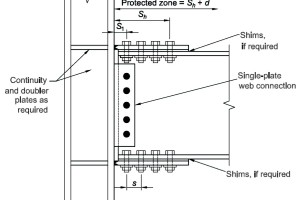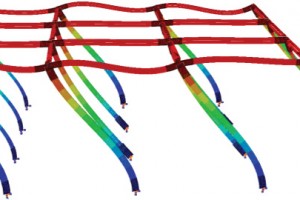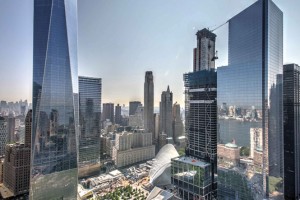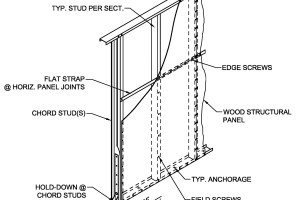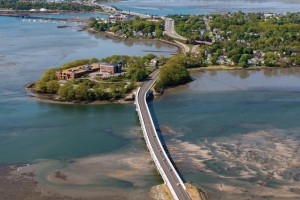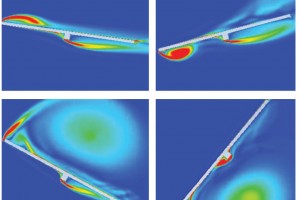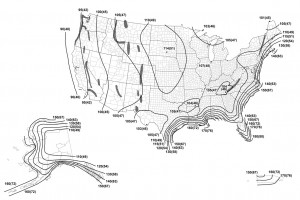In May 2016, the American Institute of Steel Construction (AISC) published ANSI/AISC 358-16, Prequalified Connections for Special and Intermediate Steel Moment Frames for Seismic Applications. It has been a significant influence on the research and development of products by government agencies, universities, and engineering research centers. Much of the research was done soon after the failure of steel moment frames during the 1994 Northridge Earthquake. …
Review Category : Articles
Earthquakes impose such large and infrequent forces on structures that building codes permit seismic damage if the structures do not collapse. This damage often takes the form of inelastic, permanent deformation of members and connections. The idea is that the occupants can safely exit the building after a significant seismic event; the structure may be a total economic loss when subjected to the maximum considered earthquake, but collapse prevention is the primary goal. …
Specified and Used Regularly for Reinforced Formed Members
Self-consolidating concrete (SCC) is increasingly used for reinforced formed-members, architectural concrete, and floors and slabs. It is often the only solution for structural repairs. SCC is a highly flowable, non-segregating concrete with a slump/flow of 20 to 30 inches. SCC can be easily placed and completely fills forms under its own weight without mechanical vibratory consolidation. …
The scope of the American Society of Civil Engineers ASCE 7-16 (ASCE 7) is to provide minimum loads, hazard levels, associated criteria, and intended performance goals for structures. One of the performance goals of ASCE 7 is to provide General Structural Integrity (GSI). The GSI requirement for anchorage of structural walls is specified in Section 1.4.4.; “The anchorage shall provide a direct connection between the walls and the roof or floor construction.” There are additional requirements for seismic out-of-plane wall anchorage in Section 12.11. …
In 2015 and early 2016, the American Iron and Steel Institute (AISI) published AISI S400-15/S1-16, North American Standard for Seismic Design of Cold-Formed Steel Structural Systems with Supplement 1. This first edition of AISI S400 represents a merging of the following previously published standards: …
Adding Value, Reducing Risk
Geotechnical peer review is not new, but it is not common industry practice. Today, however, there is a trend by public agencies in the United States to require it for tall buildings. What is geotechnical peer review, what is this trend, and what is its role in the design and construction industry for buildings and civil works? …
In this competitive international economy, the demand for educated talent is growing. As such, it makes sense that the United States should strive to reduce the expense of education. However, the current trend reflects skyrocketing costs. …
Employees leave bosses, not companies. If you have worked long enough, it is a statement you have probably heard sometime during your career. The reason? It is true. According to a Gallup study, approximately 50% of employees that leave their company exit to get away from their boss. To make it even worse, recent Department of Labor statistics indicate that the average tenure of an employee in the U.S. is now only 1.5 years. That number is likely higher for engineering companies, but it is still an indicator of where we could be headed. …
This article reviews the failure mechanisms of the Tacoma Narrows Bridge (TNB) on November 7, 1940, and the characteristics of the original bridge that facilitated the resultant theories on its failure. The design of the bridge pushed the boundaries of knowledge at the time, unfortunately with undesired consequences. …
How They Affect the Practicing Engineer
The new ASCE 7-16 Minimum Design Loads and Associated Criteria for Buildings and Other Structures (Standard) is adopted into the 2018 International Building Code (IBC) and is now hitting your desks. The 2018 IBC and the referenced Standard are being adopted by a few jurisdictions and will become more widely used in 2019. …

